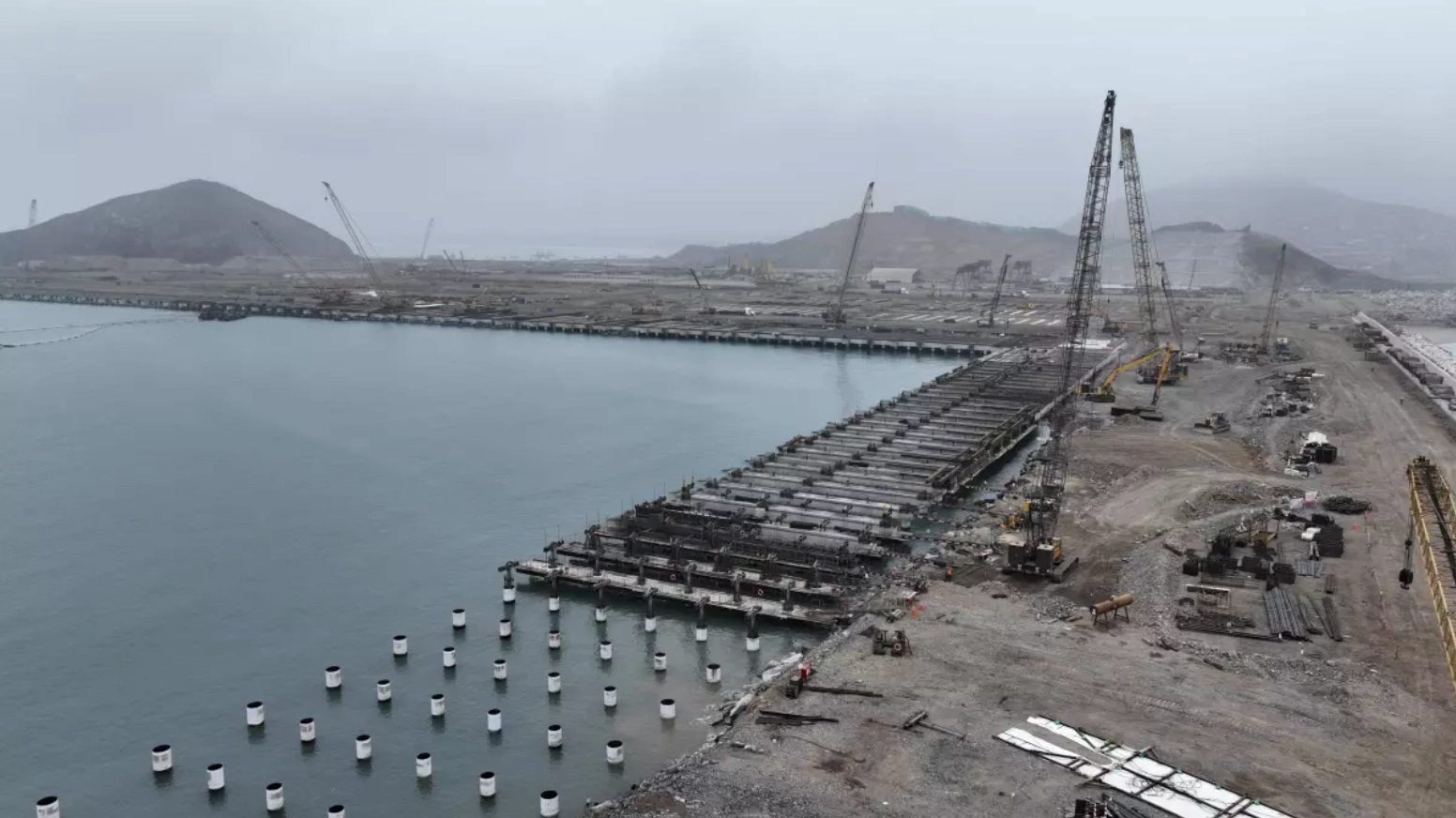According to various estimates, the Chancay multipurpose port terminal, considered one of the most ambitious works to boost international trade in the South American region, will start operating by the end of 2024.
The project is privately owned and the amount of the investment is estimated at more than $3,600 million. Its shareholders are the Chinese capital company Cosco Shipping Ports Limited (CSPL), with a 60% share, and the Peruvian Volcan Compañía Minera, with 40%. It is the first private port for public use in Peru, which means that the owner owns the land where the port will operate and will pay a fee for the use of the aquatic area, thus differentiating it from publicly owned ports, which are operated by concession entirely by private parties.
Due to its geographic and connectivity characteristics, the location of the project is ideal for the construction of this type of megaproject, because the district of Chancay is located only 80 km north of Lima, which will allow decongesting the operations in the port of El Callao, which are saturated, despite the efforts of its current operators to expand it and make it more efficient. Therefore, the Chancay multipurpose port terminal aims to position itself as one of the most modern and efficient logistic spaces in Peru, with the latest technology to receive the largest container ships in the world.
For Peru, the benefits that the implementation of this project will bring to the country are undeniable. First, the port of Chancay will contribute to a more dynamic economy, as well as to the improvement of export competitiveness. It will also generate new business and trade opportunities for Peru, making it the first Pacific logistics center in Latin America to do business with the Asian continent, particularly with China. In addition, and due to its location and access routes, the project will generate opportunities for cargo from the eastern and central highlands of the country, thus increasing its competitiveness against other markets.
Secondly, those in charge of the project claim that it will generate 10,000 new direct and indirect jobs, as well as boost the development of the surrounding area and trade, although its detractors warn of its social impact and also denounce environmental damage because of its construction and subsequent operation.
At the South American regional level, the new port of Chancay is essential because it will be a hub that will move cargo to and from Chile, Ecuador, and Colombia. In addition, and as a major strategic objective, the port will become one of China’s main connections with the countries on the west coast of South America, thus serving as a bridge for the growing trade of goods from this region to the Asia-Pacific, today the most dynamic region in the world.
Peru’s relationship with China is at its best moment. Peru has signed a free trade agreement with China that is currently in the process of being optimized, which has allowed the Asian giant to become its first trading partner after the agreement came into force. Moreover, a decade ago, both countries raised their diplomatic relations to the level of Comprehensive Strategic Partnership, which has helped consolidate friendship and cooperation in different fields. Finally, last year, Peru formally joined as a member of the Asian Infrastructure Investment Bank and in 2019 signed the Memorandum for Peru’s participation in the Belt and Road Initiative, a massive investment plan to build major infrastructure projects around the world launched by Chinese President Xi Jinping in 2013.
Precisely, for some, the Chancay port project is framed within the so-called Maritime Silk Road, which could turn Peru into a commercial power in Latin America and will be a valuable instrument for strengthening friendly relations and cooperation with China in the coming years.
However, for others, this project is part of China’s grand geopolitical plan to expand its sphere of influence, develop its trade, increase its wealth, and increase its diplomatic and military power. There is much concern for some countries, especially the United States, that China’s increased presence and influence in the region through these investments represent a potential threat by creating an excessive dependence on trade and credit ties with China, which also generates a high trade deficit and high debt.
As we have said before, the Asia Pacific region is of utmost relevance for the development of our region and offers unprecedented opportunities. However, this is still an untapped market and would have a huge impact on the economy, trade and investment. Therefore, the implementation of the port of Chancay will contribute significantly to this process as a dynamic element, especially in the current context of strategic competition between the two major world powers: the United States and China.
* This text was originally published on the REDCAEM website.
*Translated by Janaína Ruviaro da Silva from the original in Spanish.











